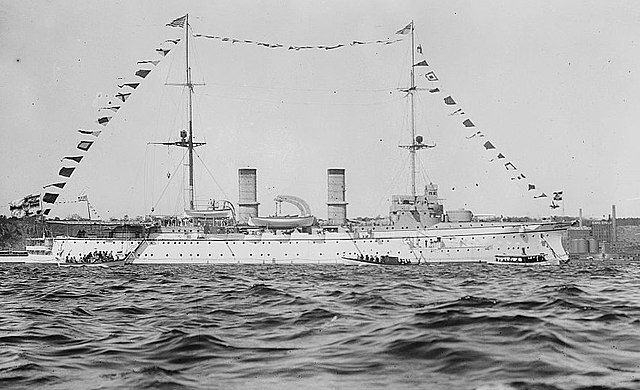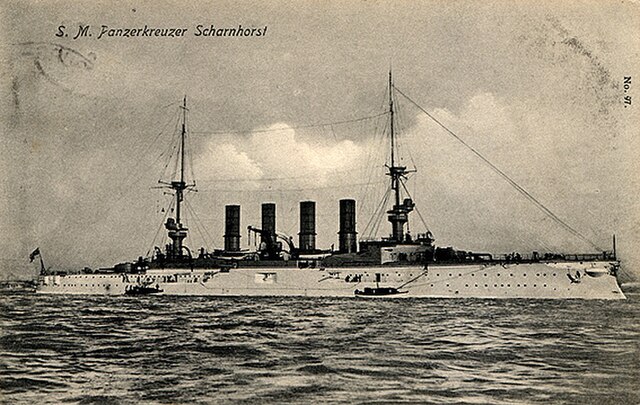The German East Asia Squadron was an Imperial German Navy cruiser squadron which operated mainly in the Pacific Ocean between the mid-1890s until 1914, when it was destroyed at the Battle of the Falkland Islands. It was based at Germany's Jiaozhou Bay Leased Territory in China.
The East Asia Squadron (in the rear, under steam) leaving Valparaíso harbour in Chile, with Chilean cruisers in the foreground
SMS Hertha with only two funnels as a training ship after her time in China
Men of the squadron ashore in Batavia (now Jakarta), Indonesia, on 27 January 1913
Scharnhorst (prewar postcard)
The Imperial German Navy or the Kaiserliche Marine was the navy of the German Empire, which existed between 1871 and 1919. It grew out of the small Prussian Navy, which was mainly for coast defence. Kaiser Wilhelm II greatly expanded the navy. The key leader was Admiral Alfred von Tirpitz, who greatly expanded the size and quality of the navy, while adopting the sea power theories of American strategist Alfred Thayer Mahan. The result was a naval arms race with Britain, as the German navy grew to become one of the greatest maritime forces in the world, second only to the Royal Navy.
Major elements of the High Seas Fleet in the early 1910s
Proclamation of Wilhelm I as Emperor of Germany at Versailles, France in 1871
Wilhelm II in German Admiral's uniform in 1913
Alfred von Tirpitz








